by Ivan | Aug 1, 2019 | Nutrition, Patient News
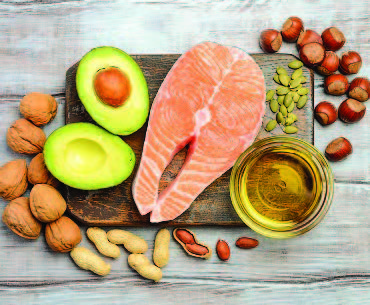
Considering Keto: Is It the Right Diet for You?
The truth is that a silver bullet for weight loss likely does not exist, but Americans’ perpetual search continues unabated. Low-carb diets such as Paleo, Whole30, and most prominently, Ketogenics, or “keto” may be the latest contenders, yet Academy of Nutrition and Dietetics spokesperson Ginger Hultin, RD, reveals she’s never seen a more popular – or more misunderstood – trend, the Keto Diet…..
Keto’s guidelines dramatically change typical eating patterns, with an emphasis on high fats (accounting for 80% of daily calories); moderate proteins (10 to 20% of daily calories); restricted carbs (5 to 10% of daily calories – ideally 20 to 30 grams a day, or the equivalent of a medium apple); and elimination of all grains, starchy vegetables and high-carb fruits. This means a diet replete with meats, butter, seeds, avocado and oily fish, but little or no bread, potatoes, corn, beans, legumes, milk, beer, sugar or fruits like bananas and pears.
The concept, according to Hultin, is that getting most of your calories from fat forces the body to enter ketosis and burn stored fats. Here’s how: In the absence of circulating blood sugar, which comes from carbohydrates, the body starts breaking down stored fat into molecules called ketones via a process called ketosis. Once ketosis is reached, usually within three to four days of eating less than 20 to 50 grams of carbohydrates daily, ketones are used to generate energy in the body until carbohydrates are eaten again.
Earlier research showed ketosis has benefits for blood sugar control among people with diabetes, and its efficacy has been proven in controlling seizures in some patients with epilepsy. Most people are attracted to keto based on the promise of shedding pounds quickly, which is when the diet’s drawbacks become glaringly evident.
“When followed consistently for the short term, the keto diet can lead to rapid weight loss,” says Hultin. “However, when people stop following it, as is inevitable on a highly restrictive diet, the weight is just as quickly regained, plus more.”
Side effects of a keto diet range from constipation due to lack of fiber to a potential negative impact on liver and kidney function, and limiting vitamin- and mineral-rich fruits, vegetables and grains is a concern for sustaining heart health. Hultin believes keto’s limited choices can also be socially isolating to dieters.
“The keto diet may be a quick fix but is not a sustainable solution,” she says.
There is no debate around the life-changing aspects of the keto diet for young patients with epilepsy, but experts agree that the long-term effects on others warrant further research before recommendations can be made. For those still interested in trying keto, a focus on healthier fats is essential, rather than options such as bacon and cheese. Additionally, be sure to test and monitor your blood cholesterol levels, as studies show many keto dieters experience an unwanted increase in these numbers.
Other trendy diets may fare no better in terms of sustainability. Whole30 takes a deliberately short-term approach with a 30-day plan that eliminates all sugar, alcohol, grains, legumes and dairy and focuses on moderate amounts of meat, seafood and eggs; plenty of vegetables; some fruit; and natural fats. Most people return to their previous eating habits after the monthlong experiment, according to Mayo Clinic. A paleo diet focuses on foods that were hunted and gathered during the Paleolithic era, and typically includes lean meats, fruits, vegetables and nuts, but eliminates whole grains, legumes and dairy products, making it challenging to adopt long-term.
The ideal diet? One that places the greatest emphasis on nature’s bounty of fruits and vegetables; encourages whole foods, whole grains, healthy oils, moderate amounts of protein, and does not eliminate entire categories of food.
“Find a diet that’s flexible enough to let you feel good about your relationship with food … and enjoy your life!” advises Hultin.
Did You Know?
Because fasting can put a person into ketosis, intermittent fasting can also be considered a type of ketogenic diet.
The post Keto Diet: Right for You? appeared first on Specialdocs Consultants.
by Ivan | Jan 11, 2019 | Nutrition, Patient News
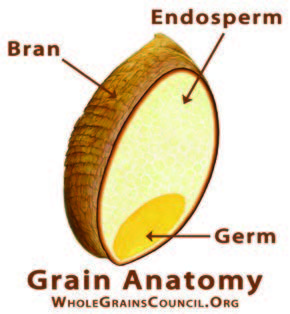
Going with the (Whole) Grain
Whole Grains may be the culinary trendsetters of the 21st century, but the ancient wonders of the grain world have remain unchanged for the last several hundred years. From chia to kamut, sorghum to spelt, like many whole grains, they are significant sources of protein, fiber and other important nutrients, such as B vitamins, iron, folate, selenium, potassium and magnesium.
You may already be familiar with quinoa, which became one of the first ancient grains to trend in U.S. kitchens earlier in the decade. You’ll find more below, each a story to tell and a taste to be discovered:
Amaranth,* native to Peru and a major food crop of the ancient Incas, has a peppery taste and a versatile cooking profile – bake it with bananas, use it to coat chicken or fish or toss with vegetables for a fresh salad.
Farro goes back 10,000 years to the time of the Fertile Crescent, and is thought to have sustained the Roman army. Key to Mediterranean diets, this grain is higher in dietary fiber than quinoa and brown rice and lower in calories. Its dense, chewy texture works well in soups, risottos and is thought by some aficionados to make the best pasta.
Freekeh, frequently found in Middle Eastern and North African cuisine, has roots in ancient Egypt. A form of wheat known for its chewy texture and nutty flavor, it’s often sold cracked into smaller, quicker cooking pieces. Use in pilafs and salads, or cook into a delicious porridge.
Kamut, also known as Pharaoh grain in a nod to its discovery in ancient Egyptian tombs, is rich and buttery-tasting, ideal in breads, pancakes and salads, or in a breakfast bowl with avocado and other whole grains, such as quinoa.
Millet,* a staple of the long-lived Himalayan Hunzas, is likely to be more familiar to Americans as a birdseed ingredient, but this grain has a delicious, nutty like flavor. Cook as a hot cereal, steam and use in salads or bake in breads and cookies.
Quinoa,* cultivated by the Inca in the Andes, has become even more popular on the American table in recent years. Dozens of varieties exist, from mild-flavored white and yellow to earthier tasting red and black. Prepare as a breakfast cereal, substitute it for rice and pasta, add to soups and salads, or pop and eat like popcorn.
Sorghum,* from Asia and West Africa, is a source of protein, and can be substituted for wheat in baked goods, eaten like popcorn or cooked into porridge.
Teff,* from Ethiopia and Eritrea, is a smaller-sized, quick-cooking grain high in iron and calcium, with a sweet molasses-like flavor that can be cooked into a polenta or ground into flour to make gluten-free breads and baked goods.
*Gluten-free
Sources: Harvard Health & Whole Grains Council
The post Whole Grain Superfood appeared first on Specialdocs Consultants.
by Specialdocs Consultants, LLC | Sep 25, 2018 | Nutrition, Patient News
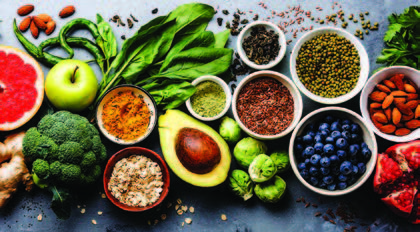
Finding the Path to Better Health Through Your Diet
In the quest for a healthier lifestyle, even inveterate beef eaters may be considering a more vegetable-centric diet. If you’re on a journey to vegetarianism or simply curious about the side roads surrounding it, follow our road map to nutritious eating and decoding diets with the expert direction of Jen Bruning, RDN, Academy of Nutrition and Dietetics.
What Kind of Eater are You?
Flexitarian is a term recently coined to describe those who eat a mostly vegetarian diet with occasional forays into meat. “Flexitarian is probably the most relatable, allowing people to take a stepwise approach to less meat,” says Bruning. “Instead of building a meal around beef, it becomes a side dish, ingredient, or is eliminated altogether.” The flexibility is key to real life applications. “If you’re at a barbecue you can enjoy without guilt.”
Dietary notes: No real challenges in terms of meeting dietary needs – follow the traditional healthy ‘plate’ but place more emphasis on vegetables, and substitute beans and legumes for meat when possible.
Pescatarian refers to those who abstain from eating all meat and animal flesh with the exception of fish. It’s becoming increasingly popular as a healthier way to eat or as a stepping stone to a fully vegetarian diet. “This can be a very balanced way of eating,” confirms Bruning, “as fish are rich in protein and Omega-3 fatty acids.” Some pescatarian diets include eggs and dairy.
Dietary notes: Avoid fish that contain higher amounts of mercury e.g. marlin, orange roughy, swordfish. Instead, opt for cod, tilapia, trout, canned light tuna, whitefish, salmon and sardines, among other choices.
Lacto-Ovo-Vegetarian is the more traditional vegetarian diet, eliminating beef, pork, poultry, fish, shellfish or animal flesh of any kind, but including eggs and dairy. It can be a nutritionally complete way of eating. Good sources of protein include legumes (lentils, beans, peas), soy-foods (tofu, tempeh, edamame), seitan, meat alternatives (veggie burgers, plant-based crumbles), milk, nuts, seeds, and grains (farro, millet, quinoa). Incorporate foods high in iron: dark leafy greens, beans, tofu, tempeh, black strap molasses, quinoa and tahini. Calcium requirements can be met with leafy green vegetables, tofu, and calcium-fortified products.
Dietary notes: Add vitamin C-rich food, such as tomatoes, bell peppers or citrus fruit, to increase iron absorption, such as beans in tomato sauce.
Vegans do not eat meat of any kind, or eggs, dairy products, honey or processed foods containing these or other animal-derived ingredients.
Dietary notes: To ensure adequate nutrition, incorporate the following foods or take a vitamin:
- Vitamin B12 – fortified foods
- Vitamin D – fortified orange juice or mushrooms treated with UV light
- Iron – dark leafy greens and Vitamin C-rich foods to help with absorption
- Calcium – kale and turnip greens
- Omega-3 fatty acids – flax seed, chia, walnuts
- Iodine – iodized salt or sea vegetables
Avoid the Raw Vegan/Raw Food diet, which is based on a nutritionally incorrect premise that cooking foods above 118 degrees F is harmful to the body.
The post Decoding Diets appeared first on Specialdocs Consultants.
by Specialdocs Consultants, LLC | Jan 9, 2018 | Nutrition, Patient News
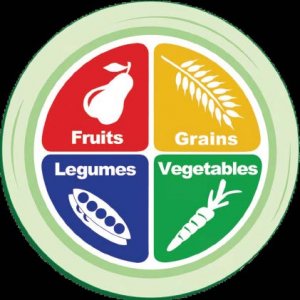
Plant the Seeds of Healthy Eating
Plant-based diet proponents are growing at a rapid clip in the US, buoyed by ongoing reports that following the regimen faithfully can result in a multitude of health benefits, ranging from increased energy and elevated mood to lower risks of diabetes, high blood pressure and heart disease. The abundance of antioxidants in whole plant foods may also help prevent or slow certain cancers. In addition, plant-based diets are more environmentally sustainable than diets rich in animal products because they use fewer natural resources.
“Plant-based nutrition is superior when it comes to most diseases.”
– Dr. Kim Williams, former president of the American College of Cardiology
Multiple studies point to the preponderance of refined, processed foods, loaded with added sugars and salts that comprise the standard American diet, and the link to disease. Choosing whole foods instead of refined grains and sugary fruit juices is key, and the Physicians Committee for Responsible Medicine illustrates the concept with these four ‘new’ food groups on the nutritional plate:
- Fruits are rich in fiber, vitamin C, and betacarotene. Also include fruits high in vitamin C, such as citrus fruits, melons, and strawberries. Choose whole fruit over fruit juices, which don’t contain much fiber.
- Vegetables provide vitamin C, betacarotene, riboflavin, iron, calcium, fiber, and other nutrients. Good sources are dark green leafy vegetables such as broccoli, collards, kale, mustard and
turnip greens, endive, or bok choy. Dark yellow and orange vegetables such as carrots, winter squash, sweet potatoes, and pumpkin provide extra beta-carotene.
- Whole Grains contain fiber and other complex carbohydrates, as well as protein, B vitamins, and zinc. Choose bread, rice, pasta, hot or cold cereal, corn, millet, barley, bulgur, buckwheat groats, and tortillas. Build each of your meals around a hearty grain dish.
- Legumes are good sources of fiber, protein, iron, calcium, zinc and B vitamins. These include beans, peas, lentils, chickpeas, baked and refried beans, soymilk, tempeh, and tofu.
How to adopt a plant-based diet
- Focus on filling your plate with a variety of colorful fruits, vegetables, whole grains and legumes, rather than on serving sizes or calorie counting.
- Try eating at least half your calories in legumes, whole grains, and starchy vegetables that will keep you full.
- Start with a familiar favorite recipe and change it to a plant-based one, such as chili with beans only or veggie or portobello burgers.
- Sources: Plantrician Project, Nutritionstudies.org
The post Plant-Based Diet appeared first on Specialdocs Consultants.
by Specialdocs Consultants, LLC | Nov 20, 2017 | Nutrition, Patient News
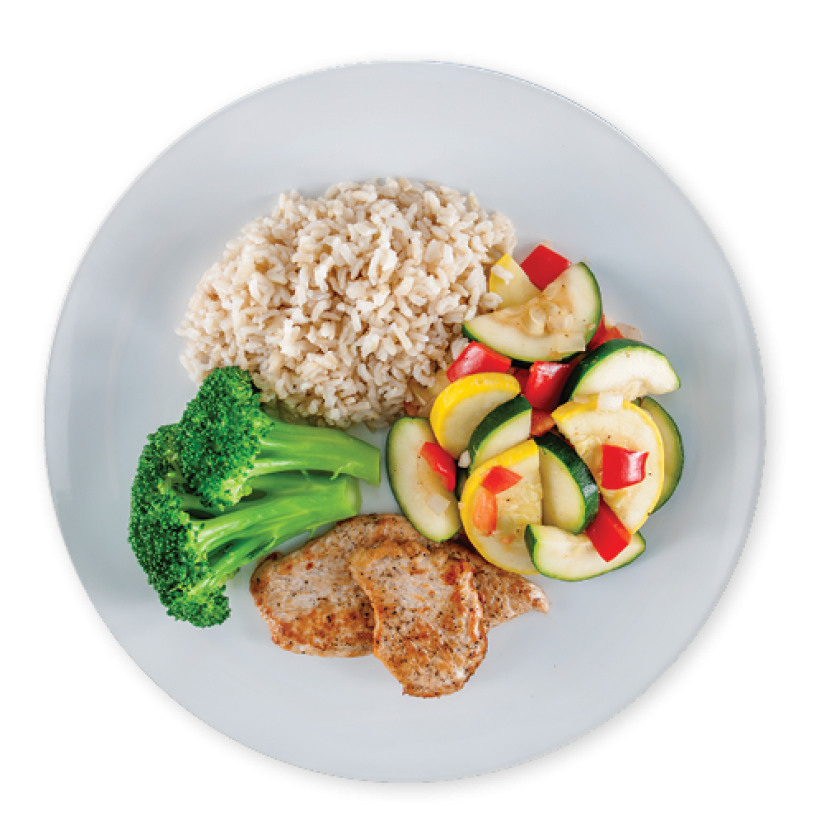
Nutritionists Weigh in on Healthy Eating
Picturing a healthy meal has never been more accessible, thanks to the ubiquity of visual aids such as MyPlate, successor to the well-known Food Pyramid of the ‘90s. A quick scan of the plate’s quadrants enables users to see at a glance proportions of vegetables, proteins and other foods recommended for a nutritionally balanced day of healthy eating. Hailed as a significant breakthrough when it debuted in 2010, for many dietitians and health experts, MyPlate did not go far enough in revamping the American diet.
For instance, Harvard’s Healthy Eating Plate limited red meats but not healthy oils, while the American Institute of Cancer Research’s New American Plate relied even more heavily on vegetables and fruits, accounting for fully two thirds of the plate. The most recent federal guidelines, just issued for 2015-2020, now emphasize shifts needed to choose nutrient-dense foods and beverages in place of less healthy options, and the interconnected relationships between each dietary component. Illustrated at right are what a healthy, and even healthier meal, can look like at your table this year.
MyPlate breaks it down:
- A variety of vegetables from all of the subgroups—dark green, red and orange, legumes (beans and peas), starchy, and other
- Fruits, especially whole fruits
- Grains, at least half of which are whole grains
- Fat-free or low-fat dairy, including milk, yogurt, cheese and/or fortified soy beverages
- A variety of protein foods, including seafood, lean meats and poultry, eggs, legumes (beans and peas), and nuts, seeds and soy products
- Oils
- Limited saturated fats and trans fats, added sugars and sodium (less than 2,300 milligrams per day)
- Alcohol in moderation, up to one drink per day for women and up to two drinks per day for men
- Physical activity: Weekly, strive for 150 minutes of moderate intensity activity (brisk walking) and 75 minutes of vigorous intensity aerobic activity (swimming laps)
The American Institute of Cancer Research (AICR) offers a portion-controlled diet based on fruits, vegetables, whole grains and other plant-based foods that provide an array of cancer-protective compounds while serving as powerful weight-management tool. According to the AICR, the fiber and water in plant foods gives a feeling of satiety with a minimum of calories. Their main message: maintaining a healthy weight is one of the most important steps you can take to reduce your risk of cancer.
The post Healthy Eating: From Food Pyramid to MyPlate appeared first on Specialdocs Consultants.
by Specialdocs Consultants, LLC | Nov 20, 2017 | Nutrition, Patient News

Calcium, so essential to strong bones and teeth, as well as nerve transmission, muscle contraction and blood clotting, can be in short supply as we age. Exactly how much is needed of this important mineral, and Vitamin D, its companion to ensure optimal absorption, has been the subject of intense scrutiny over several decades. However, a clear cut consensus has yet to be reached from data that is by turns contradictory, reassuring or confusing. A cluster of respected studies have cast doubt on the efficacy of calcium – either in supplements or from dietary sources – in reducing the risk of osteoporosis or bone fractures. Some reports cast supplements in an even more negative light, pointing to potential side effects that range from gastrointestinal issues to increased risk of cardiovascular disease.
A quick look at research highlights, beginning with the study that arguably set the stage for use of calcium supplements in seniors, illustrates why there is still a considerable amount of debate:
- 1992: Over 18 months, a trial of elderly French women finds the number of fractures was reduced by up to 43 percent among women treated with 1200 mg of calcium and 800 units of vitamin D daily. In subsequent years, the significant levels of vitamin D deficiency of the subjects in this study created uncertainty about applying the results to healthier adults.
- 1994: Guidelines vary. National Institutes of Health recommends 1500 mg of calcium and 600-800 units of vitamin D per day for post-menopausal women; Institute of Medicine recommends 1200 mg of calcium and 400-600 units of vitamin D daily for those over 50.
- 2006: Fracture risk not reduced. A report from the Women’s Health Initiative showed that 18,000 postmenopausal women who took calcium supplements and vitamin D were no less likely to break their hips than an equal number who took a placebo pill, although the density of their hip bones increased slightly.
- 2010: Mixed results on heart issues. A report from the Women’s Health Initiative showed no significant increase in heart problems among 36,000 women who were taking calcium supplements. However a study in the British Medical Journal (BMJ) reported they were associated with an increased risk of heart attack, concluding that “a reassessment of the role of calcium supplements in the management of osteoporosis is warranted.”
- 2012: No-supplement recommendation. The U.S. Preventive Services Task Force, a panel that advises doctors on matters of public health, stated there is not enough conclusive evidence to recommend taking calcium or vitamin D supplements to prevent fractures in healthy women.
- 2015: The case against supplements builds. According to a meta-analysis in the BMJ, additional calcium from supplements may build up in the arteries or kidneys, causing heart disease or kidney stone formation. An accompanying editorial reads: “The weight of evidence against such mass medication of older people is now compelling.”
Confusing, to be sure. While the optimal dose has yet to be determined, today’s best guidelines call for calcium intake below 1,600 mg a day for women over 50 and men over 70, and 1,000 mg a day of calcium for those under 50, along with appropriate amounts of vitamin D to enhance absorption. However, experts agree, more is not necessarily better, and supplements should be considered only if the daily goal cannot be met through food sources. In addition, strength training, for arms and upper spine, and weight-bearing exercise such as walking or stair climbing, for legs, hips and lower spine, are essential to build and maintain bone density. Remember: every patient has different needs, and these can change over time.
The post Got Milk? Or Calcium Supplements? Or Neither? appeared first on Specialdocs Consultants.







Recent Comments